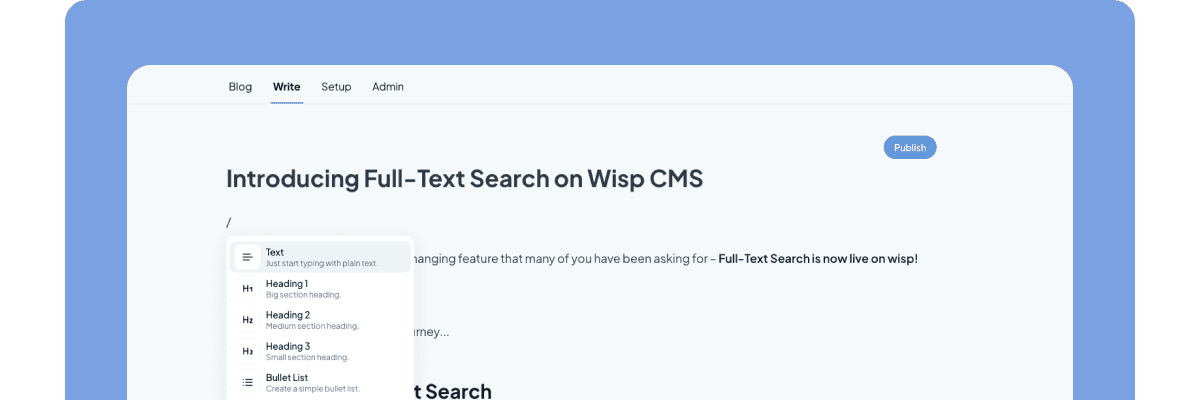
You've just upgraded to Next.js 15 and are excited to start testing your application with Jest. But as you begin setting up your testing environment, you encounter a flood of cryptic error messages about module compatibility, path resolution issues, and React version conflicts. Sound familiar?
Many developers are finding themselves in this exact situation, wrestling with Jest configuration in their Next.js 15 projects. The transition to newer versions of Next.js and React has introduced several challenges that weren't present in earlier versions.
"Every time I try to upgrade React and React-DOM to version 19.0.0, Jest starts throwing compatibility errors. It's incredibly frustrating when you just want to write some basic tests," shares one developer on Reddit. This sentiment echoes throughout the development community, with many questioning whether Jest remains a viable choice for modern Next.js applications.
But don't worry – while these challenges are real, they're not insurmountable. This comprehensive guide will walk you through everything you need to know about using Jest with Next.js 15, from basic setup to handling common issues and exploring alternative solutions when needed.
The Current State of Jest and Next.js 15
The relationship between Jest and Next.js 15 has become increasingly complex. Recent discussions in the Next.js community highlight growing concerns about compatibility issues, particularly when combined with React 19. Developers report challenges ranging from dependency conflicts to module resolution problems, leading many to question whether Jest remains the best choice for testing Next.js applications.
Understanding the Challenges
Before diving into solutions, it's important to understand the main issues developers face:
ES Modules Compatibility
Jest's handling of ECMAScript modules often conflicts with Next.js 15's module system
Developers frequently encounter "Unexpected token 'export'" errors
Module resolution becomes particularly problematic with external packages
React 19 Integration
Upgrading to React 19 while maintaining Jest functionality has proven challenging
Test suites that worked perfectly in previous versions may suddenly fail
Configuration requirements have become more complex
Dependency Management
Package version conflicts between Jest, React, and Next.js
Difficulty in resolving peer dependencies
Installation issues when using package managers like pnpm
These challenges have led many developers to explore alternatives like Vitest, but before we discuss alternatives, let's understand how to properly set up Jest with Next.js 15 and address these common issues.
Setting Up Jest with Next.js 15
Basic Setup
Install Required Dependencies
npm install --save-dev jest @testing-library/react @testing-library/jest-dom jest-environment-jsdom @types/jestCreate Jest ConfigurationCreate a
jest.config.jsfile in your project root:const nextJest = require('next/jest') const createJestConfig = nextJest({ // Provide the path to your Next.js app to load next.config.js and .env files in your test environment dir: './', }) // Add any custom config to be passed to Jest const customJestConfig = { setupFilesAfterEnv: ['<rootDir>/jest.setup.js'], testEnvironment: 'jest-environment-jsdom', moduleNameMapper: { // Handle module aliases (if you use them in your app) '^@/components/(.*)$': '<rootDir>/components/$1', '^@/pages/(.*)$': '<rootDir>/pages/$1', } } module.exports = createJestConfig(customJestConfig)Create Jest Setup FileCreate a
jest.setup.jsfile:import '@testing-library/jest-dom'Update package.jsonAdd test scripts to your package.json:
{ "scripts": { "test": "jest", "test:watch": "jest --watch" } }
Advanced Configuration
To address some of the common issues mentioned in the community, you'll need additional configuration:
Handling ES Modules
// jest.config.js const customJestConfig = { // ... other config transformIgnorePatterns: [ '/node_modules/(?!(@your-problematic-module)/)', ], transform: { '^.+\\.(js|jsx|ts|tsx)$': ['babel-jest', { presets: ['next/babel'] }], }, }Resolving Path Aliases
// jest.config.js const { pathsToModuleNameMapper } = require('ts-jest') const { compilerOptions } = require('./tsconfig') const customJestConfig = { // ... other config moduleNameMapper: { ...pathsToModuleNameMapper(compilerOptions.paths, { prefix: '<rootDir>/' }), }, }
Common Issues and Solutions
1. ES Modules Compatibility Issues
One of the most frequently reported issues is Jest's handling of ES modules. As noted by developers, you might encounter errors like:
SyntaxError: Cannot use import statement outside a module
Solution:
Update your Jest configuration to handle ES modules:
// jest.config.js const customJestConfig = { // ... other config extensionsToTreatAsEsm: ['.ts', '.tsx'], moduleFileExtensions: ['ts', 'tsx', 'js', 'jsx', 'json', 'node'], }For specific problematic modules, add them to
transformIgnorePatterns:transformIgnorePatterns: [ '/node_modules/(?!(module-that-needs-to-be-transformed)/)', ]
2. React 19 Compatibility
Many developers report test failures after upgrading to React 19. This is often due to changes in React's internal architecture and how it handles certain features.
Solution:
Ensure you're using the latest version of testing libraries:
npm install --save-dev @testing-library/react@latest @testing-library/jest-dom@latestUpdate your test environment setup:
// jest.setup.js import '@testing-library/jest-dom' import { configure } from '@testing-library/react' configure({ throwSuggestions: true, })If using React.Suspense in tests, wrap components with act():
import { act } from '@testing-library/react' test('component with suspense', async () => { await act(async () => { render(<YourComponent />) }) })
3. Import Path Resolution
Path resolution issues are another common pain point, particularly when using TypeScript path aliases. Developers often see errors like:
Cannot find module '@/components/Button' from 'src/tests/Button.test.tsx'
Solution:
Implement comprehensive path mapping:
// jest.config.js const customJestConfig = { moduleNameMapper: { '^@/(.*)$': '<rootDir>/src/$1', '^@components/(.*)$': '<rootDir>/src/components/$1', '^@utils/(.*)$': '<rootDir>/src/utils/$1', // Add more mappings as needed } }For TypeScript projects, sync with tsconfig.json:
const { pathsToModuleNameMapper } = require('ts-jest') const { compilerOptions } = require('./tsconfig') const customJestConfig = { moduleNameMapper: { ...pathsToModuleNameMapper(compilerOptions.paths), '\\.(css|less|scss|sass)$': 'identity-obj-proxy', } }
Writing Effective Tests
Component Testing
Here's how to write effective tests for your Next.js components:
Basic Component Testing
import { render, screen } from '@testing-library/react' import Button from '@/components/Button' describe('Button Component', () => { it('renders with correct text', () => { render(<Button>Click me</Button>) expect(screen.getByText('Click me')).toBeInTheDocument() }) it('handles click events', () => { const handleClick = jest.fn() render(<Button onClick={handleClick}>Click me</Button>) screen.getByText('Click me').click() expect(handleClick).toHaveBeenCalled() }) })Testing with Context
import { ThemeProvider } from '@/context/ThemeContext' const customRender = (ui: React.ReactElement, options = {}) => render(ui, { wrapper: ({ children }) => ( <ThemeProvider>{children}</ThemeProvider> ), ...options, }) test('component uses theme context', () => { customRender(<ThemedComponent />) // Your assertions here })Testing Async Components
test('async component loads data', async () => { render(<AsyncComponent />) // Wait for loading state expect(screen.getByText('Loading...')).toBeInTheDocument() // Wait for data const data = await screen.findByText('Loaded Data') expect(data).toBeInTheDocument() })
API Route Testing
Testing API routes in Next.js requires special consideration:
import { createMocks } from 'node-mocks-http'
import handler from '@/pages/api/your-endpoint'
describe('API Endpoint', () => {
it('handles GET request', async () => {
const { req, res } = createMocks({
method: 'GET',
})
await handler(req, res)
expect(res._getStatusCode()).toBe(200)
expect(JSON.parse(res._getData())).toEqual(
expect.objectContaining({
// your expected response
})
)
})
})
Best Practices and Optimization
1. Test Organization
Structure your tests effectively to maintain clarity and scalability:
// Component structure
src/
components/
Button/
Button.tsx
Button.test.tsx
Button.module.css
pages/
api/
endpoint.ts
endpoint.test.ts
2. Performance Optimization
Parallel Test Execution
// package.json { "scripts": { "test": "jest --maxWorkers=50%" } }Selective Test Running
# Run tests matching a pattern npm test -- -t "button" # Run tests in watch mode npm test -- --watchCache Configuration
// jest.config.js module.exports = { // ... other config cacheDirectory: '.jest-cache', cache: true, }
3. Mocking Strategies
Module Mocking
jest.mock('@/utils/api', () => ({ fetchData: jest.fn(() => Promise.resolve({ data: 'mocked' })) }))Next.js Router Mocking
jest.mock('next/router', () => ({ useRouter() { return { route: '/', pathname: '', query: {}, asPath: '', push: jest.fn(), events: { on: jest.fn(), off: jest.fn() }, beforePopState: jest.fn(() => null), prefetch: jest.fn(() => null) } } }))Environment Variables
beforeAll(() => { process.env.NEXT_PUBLIC_API_URL = 'http://test-api.com' }) afterAll(() => { delete process.env.NEXT_PUBLIC_API_URL })
Alternatives to Jest
Given the challenges with Jest in Next.js 15, many developers are exploring alternatives. Here's a detailed look at the most promising options:
1. Vitest
Vitest has emerged as a popular alternative, with many developers in the Next.js community reporting positive experiences.
Advantages:
Native ES modules support
Faster execution times
Better compatibility with modern frameworks
Similar API to Jest (easy migration)
Setup with Next.js:
npm install -D vitest @vitejs/plugin-react @testing-library/react jsdom
// vitest.config.ts
import { defineConfig } from 'vitest/config'
import react from '@vitejs/plugin-react'
export default defineConfig({
plugins: [react()],
test: {
environment: 'jsdom',
globals: true,
setupFiles: ['./vitest.setup.ts'],
},
})
Example Test:
import { describe, it, expect } from 'vitest'
import { render, screen } from '@testing-library/react'
import Button from './Button'
describe('Button', () => {
it('renders correctly', () => {
render(<Button>Click me</Button>)
expect(screen.getByText('Click me')).toBeInTheDocument()
})
})
2. Playwright for Component Testing
While primarily known for E2E testing, Playwright now offers component testing capabilities that some developers find more reliable than traditional unit testing approaches.
Setup:
npm install -D @playwright/test @playwright/experimental-ct-react
// playwright-ct.config.ts
import { defineConfig } from '@playwright/experimental-ct-react'
export default defineConfig({
testDir: './tests',
use: {
ctPort: 3100,
ctViteConfig: {
resolve: {
alias: {
'@': '/src',
},
},
},
},
})
Example Component Test:
import { test, expect } from '@playwright/experimental-ct-react'
import Button from './Button'
test('button renders correctly', async ({ mount }) => {
const component = await mount(<Button>Click me</Button>)
await expect(component).toContainText('Click me')
})
Making the Decision: Jest vs Alternatives
When deciding whether to stick with Jest or migrate to an alternative, consider these factors based on community feedback and experiences:
Reasons to Stay with Jest
Team Familiarity
Established testing patterns and knowledge
Extensive documentation and community support
Large ecosystem of plugins and tools
Project Constraints
Legacy codebase with extensive Jest tests
Team resource limitations for migration
Dependencies on Jest-specific features
Performance RequirementsAs noted in community discussions, Jest still offers competitive performance:
# Example Jest performance optimization jest --maxWorkers=50% --runInBand
Reasons to Switch to Alternatives
Modern Framework Compatibility
Better support for ES modules
Fewer configuration requirements
Improved TypeScript integration
Development Experience
Faster test execution with Vitest
Better error messages and debugging
Simpler configuration
Future-ProofingAs mentioned by developers in the Next.js community:
"If you must do unit testing, Vitest is an improvement but still not great."
Migration Strategy
If you decide to migrate from Jest, consider this phased approach:
Assessment Phase
Audit existing tests
Identify Jest-specific features in use
Evaluate team capacity for migration
Pilot Phase
Start with new features using the new framework
Create parallel test suites for critical components
Document migration patterns and challenges
Migration Phase
Gradually migrate existing tests
Update CI/CD pipelines
Maintain both test suites during transition
Conclusion
The relationship between Jest and Next.js 15 presents both challenges and opportunities. While Jest remains a viable testing solution, the growing pains of modern JavaScript development have led to the emergence of compelling alternatives like Vitest and Playwright's component testing.
Key Takeaways
Jest Integration
Possible but requires careful configuration
May face compatibility issues with React 19
Solutions exist for common problems
Alternative Frameworks
Vitest offers modern features and better compatibility
Playwright provides comprehensive testing capabilities
Migration should be carefully considered
Decision Making
Consider team expertise and project requirements
Evaluate long-term maintenance implications
Factor in future framework updates
Resources for Further Learning
Remember that the best testing solution is one that fits your team's needs and capabilities while ensuring code quality and maintainability. Whether you choose to stick with Jest or migrate to alternatives, maintaining a comprehensive test suite remains crucial for production-ready Next.js applications.



